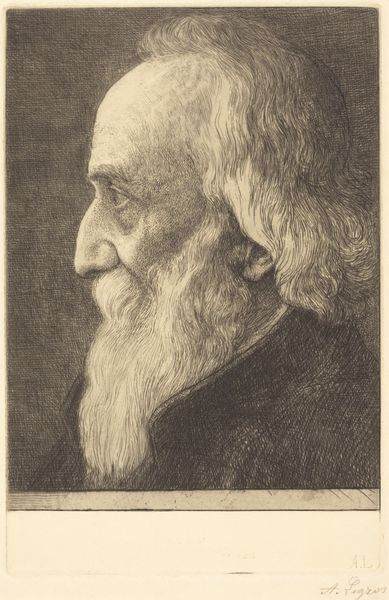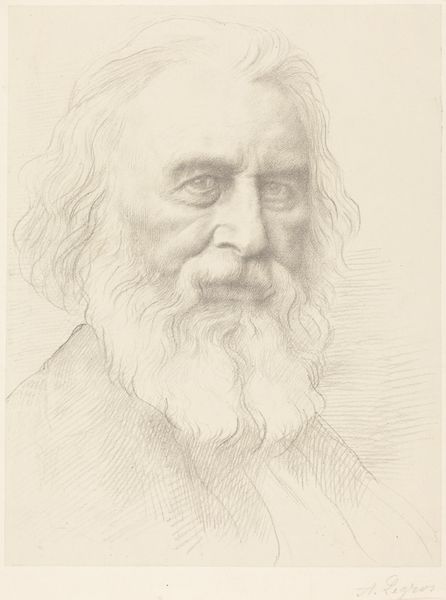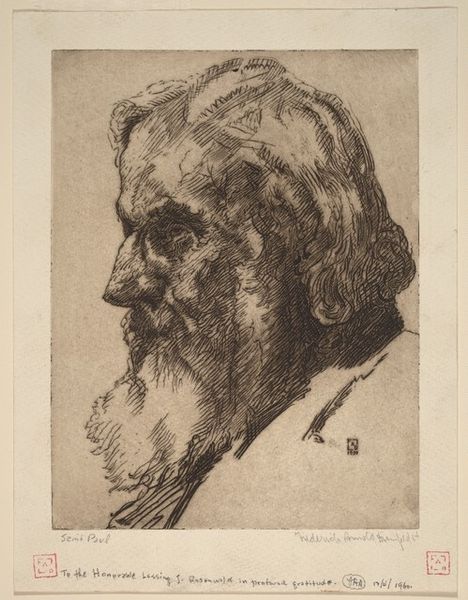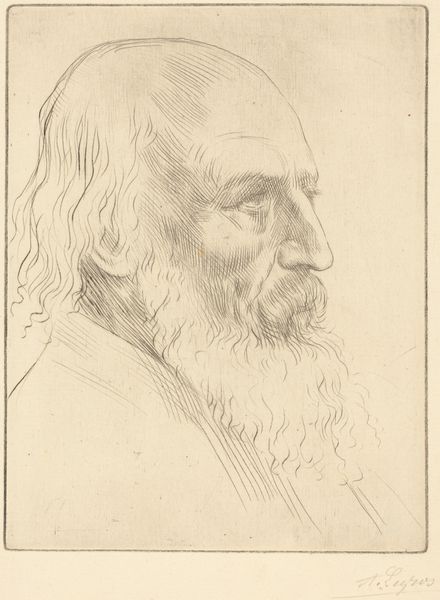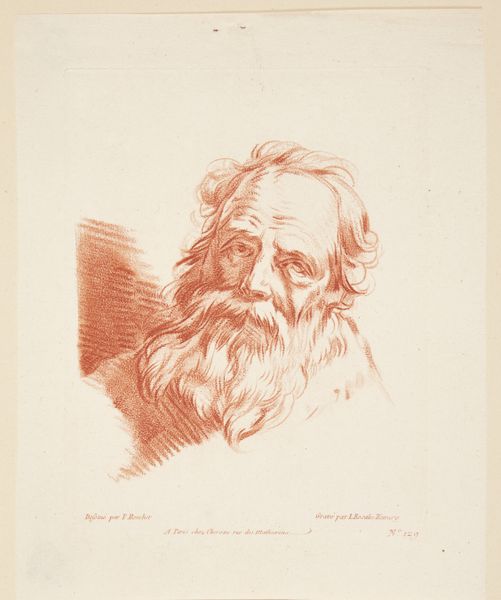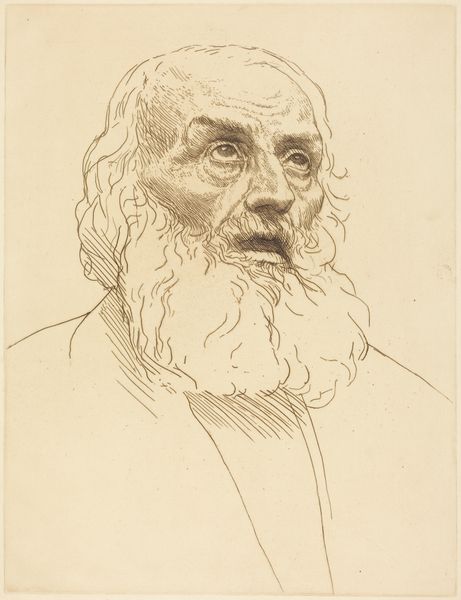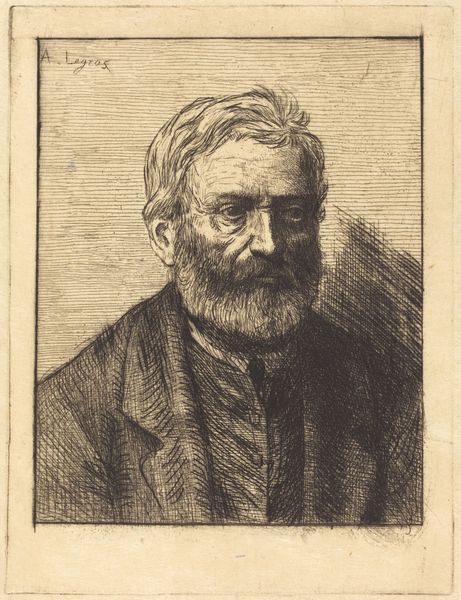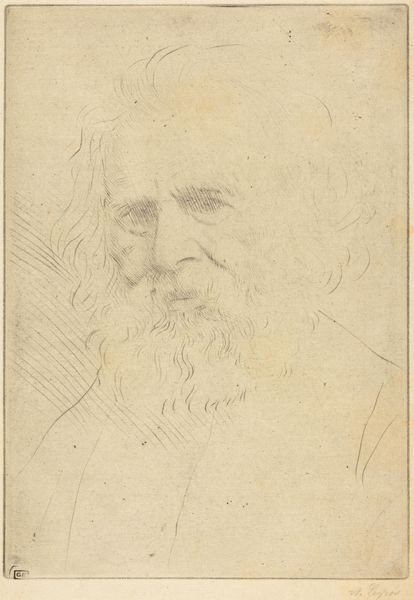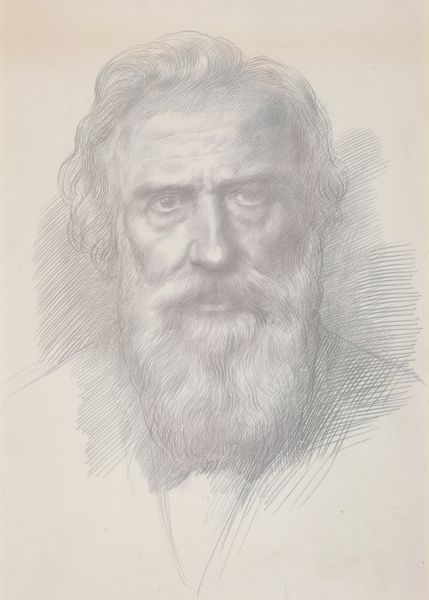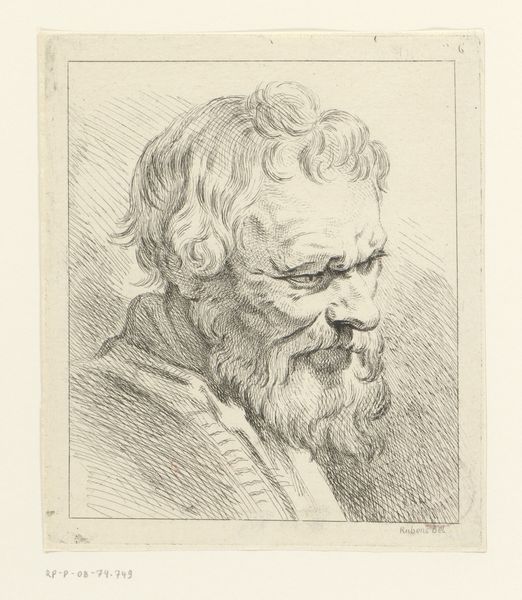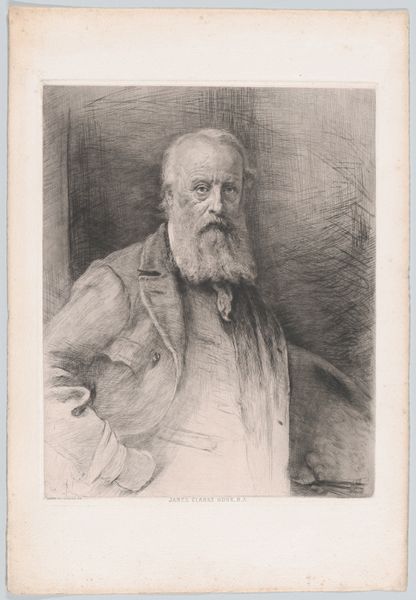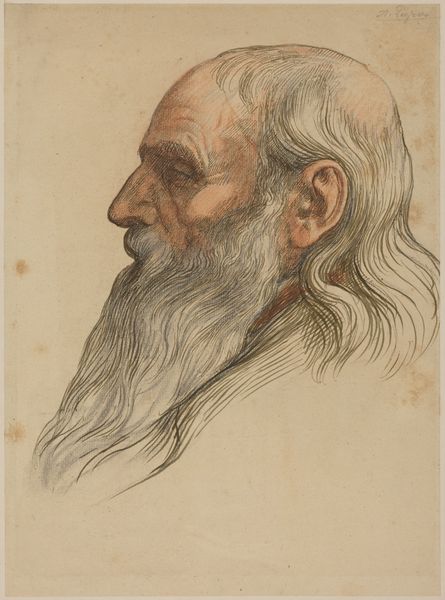
drawing, print, etching
#
portrait
#
drawing
# print
#
etching
#
portrait drawing
#
portrait art
Copyright: National Gallery of Art: CC0 1.0
Curator: This etching by Alphonse Legros is titled "W.H. Longfellow, 1st plate." The portrait captures the famous American poet with incredible detail. My first impression is somber and a bit stern. Editor: There’s a weight in his gaze, a pensiveness rendered beautifully through the intricate linework. I’m drawn to how Legros uses hatching and cross-hatching to define form, but I’m also curious about how portraiture, as a genre, serves as both a commemoration and, inevitably, an exercise in power. Who gets their portrait made? And what stories get amplified? Curator: Well, Longfellow's prominence certainly afforded him the privilege. But let’s consider Legros’s methods. Etching involves coating a metal plate with wax, drawing through it to expose the metal, and then bathing it in acid. It’s an indirect process. The hand guides the tool, but the acid performs the "bite," introducing an element of chance. This process allows for fine, detailed lines—think about the details of the hair—and mass reproduction of images. Editor: True. And that reproducibility impacts the distribution of the image, and therefore, the legacy of Longfellow as carefully constructed by both himself and the artist. These details, meticulously rendered through a complex, reproducible method, contribute to this… icon-making. Also, I’m wondering if Legros made any specific choices with the aquatint application, for example the dark shade above his head. What did that do, representationally? Curator: It draws focus, for sure. Now, there’s something to be said about how printmaking made art more accessible to a wider audience. It democratizes portraiture, if only slightly. Rather than solely the elite having their likeness immortalized, even middle-class individuals could acquire an image of a well-known public figure, produced, owned, and distributed by new markets and trades. Editor: But access is a layered concept. Yes, the creation of such a copy aided circulation; but how much did it cost to acquire an etching like this one, versus an engraving, versus a simple printed advertisement? I think a materialist analysis is not fully complete without asking these questions. Curator: Point taken. Thinking about production reminds us how intrinsic labor is to creating, buying, and consuming art, in that era and today. And as much as etching creates “copies” or allows mass distribution of images, Legros still had to labor to make this specific likeness, using the precise set of material circumstances and artistic skills available to him in that specific period. Editor: Ultimately, Legros' etching, with its focused detail and subtle somberness, provides a fascinating study on not just the sitter but also the mechanics of fame and how it is created and sustained through representational technologies and societal power structures. Curator: And when considering Legros' methods, we understand art production as both creative vision and skillful application, with cultural impacts that spread across economy and status.
Comments
No comments
Be the first to comment and join the conversation on the ultimate creative platform.
